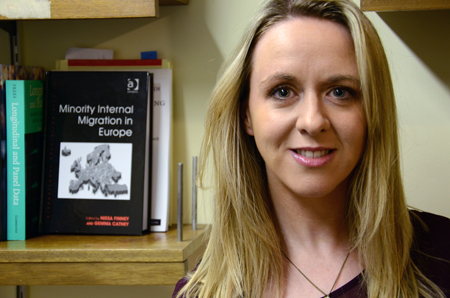Dr Gemma Catney is a Leverhulme Trust Early Career Research Fellow in the University of Liverpool’ s Department of Geography and Planning
“The growing number of people in England and Wales who affiliate with a minority ethnic identity will of course be found predominantly in the most ethnically diverse places, in particular cities – these areas are initially attractive to immigrants who will naturally seek places with a greater number of fellow immigrants and hence a greater support network and specialist shops and services.
Traditional migration flow
“Foreign-born students will also be concentrated in these cities, near their place of study. Over time, many of these immigrants will leave the UK, but research at the University of Liverpool has shown that, of those who do stay (and their descendents), many will follow the traditional migration flow from cities into suburban and rural areas, associated with family migration to meet housing needs and preferences.
“Contrary to assertions of ‘White flight’, all ethnic groups – White British and minority groups – have seen an increase in their presence in suburban and rural areas. The housing aspirations which lead to this movement are common to all ethnic groups and not a White British phenomenon.
“The White British have not become more isolated from members of minority groups. My recent research, which applied a commonly used measure of ‘segregation’, the Index of Isolation, demonstrates that the White British were less isolated from ethnic minorities in 2011 than in 2001.
Beyond the residential environment
“It should also be remembered that inter-group mixing can take place in arenas beyond the residential environment – the workplace, in schools, and in social contexts, for example.
“Research released earlier this year shows that neighbourhood residential separation has decreased for minority groups and rural areas are experiencing greater ethnic mixing.”
Gemma is responding to an article that appeared in the Daily Mail, based on analysis by the thinktank Demos.

